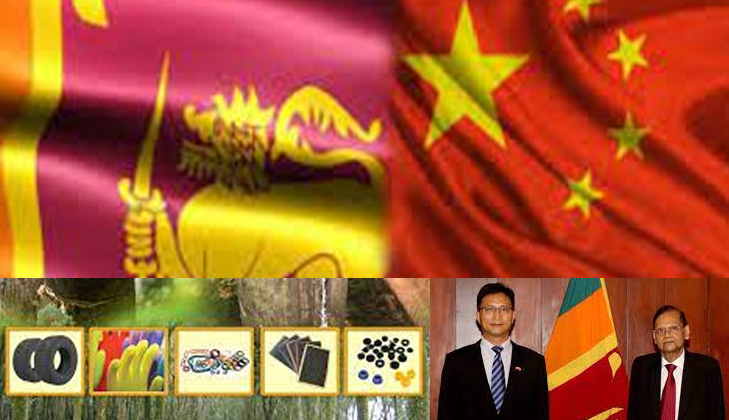By P.K.Balachandran
In the early phase of the economic crisis in Sri Lanka, China had refused to reschedule the repayment of loans it had given, saying that it had no system of doing such a thing. Its Foreign Minister, Wang Yi, had advised the Sri Lankan President, Gotabaya Rajapaksa, that he should instead promote Sri Lankan industries and exports and sign the long-pending Free Trade Agreement (FTA) with China to end the foreign exchange shortage.
Later, when the economic situation in Sri Lanka worsened, China offered to give a loan of US$ 1.5 billion to help pay off old loans and an additional US$ 1 billion as buyer’s credit to purchase essential goods from China. After grumbling about not being consulted before Sri Lanka approached the IMF, China offered to help Sri Lanka swing a good deal with the IMF.
But China’s old demand that Sri Lanka should speedily negotiate and conclude an FTA with it, still remains. China is certain to pursue this goal to firm up its economic ties with Sri Lanka which cannot be based only on the Belt and Road Initiative (BRI), which is basically a program of building infrastructural facilities. China would like its relations with Sri Lanka to be based on the firmer ground of trade and investment. The FTA would throw open opportunities for trade and investment.
Understandably, Sino-Lankan trade has been heavily one-sided. In 2020, China exported US$ 4.01 billion to Sri Lanka. The main products were light rubberized knitted fabric ( US$241 million), broadcasting equipment (US$ 225 million), and refined petroleum (US$127 million). In the same year, Sri Lanka exported US$ 266 million worth of goods to China. The main products were tea (US$ 60.4 million), coconut and other vegetable fibers (US$ 24.2 million) and knit T-shirts (US$ 18.5 million).
Sri Lanka would like this to be a little less one-sided, but it is wary about entering into an FTA with China, as indeed it has been with other countries. The Indo-Lankan FTA has given a boost to Lankan exports to India, but still, Sri Lankans keep viewing the ISLFTA unfavorably. They blame the Non-Tariff Barriers (NTB) raised by India.
The same apprehensions plague their minds when they are made to discuss an FTA with China. China’s exports to Sri Lanka have increased by leaps and bounds. According to economist Umesh Moramudali, in 2000, imports from China represented only 3.5% of Sri Lanka’s total imports. But by 2017, that had risen to 20%. There was a four-fold rise in imports from China from 2011 to 2018.
Further, Moramudali points to an interesting fact that Sri Lanka’s imports from China increased despite an overall contraction in the island nation’s international trade and the rise of protectionism in its policies. Sri Lanka’s imports-to-GDP ratio was 36% in 2005; during the same year, imports from China to GDP ratio was only 2.6%. By 2017, the imports to GDP ratio had dropped down to 23.8% while imports from China to GDP ratio had increased to 4.8 %.
“This significant increase in imports from China came even without China having a Free Trade Agreement (FTA) with Sri Lanka. That means Chinese imports are subjected to normal tariffs, which might be eliminated under an FTA,” he observes. This could worry Sri Lankan entrepreneurs.
It was in 2014, during the regime of the China-friendly Lankan President Mahinda Rajapaksa, that discussions on an FTA with China were mooted. Since then, the two sides have had six discussion sessions. But the talks broke down in 2017 due to disagreements over the level of trade liberalization under the FTA. China wanted 90% of goods to be tariff free. “Clearly a scenario Sri Lanka is not comfortable with”, as Moramudali observes.
According to the website Silk Road Briefing, China gives priority to trade in goods and then moves on to trade in services and investments in its FTAs with other countries (China has signed FTAs with 26 countries so far). China is typically committed to eliminating duties on over 95% of tariff lines. “This represents a huge market for Sri Lankan manufacturers if they can break out of the mold of purely thinking domestically,” the Silk Road Briefing website says.
The opportunities for Sri Lankan entrepreneurs are aplenty. The Colombo-based Institute of Policy Studies (IPS) said in its 2015 report on the Sino-Lankan FTA that Sri Lanka had a comparative global trade advantage in 566 products, of which, 243 items were or could be exported to China. There were an additional 299 products with trading potential with China. These included vegetable products, rubber, and plastics.
The Silk Road Briefing website points that there are regional examples which Sri Lankan businesses and entrepreneurs could follow: “The China-ASEAN Free Trade Agreement, which impacted small countries such as Cambodia and Laos, as well as larger economies such as Indonesia, Malaysia, Thailand, and Vietnam, came into effect in 2009. At the time, unprepared businesses struggled in their own domestic markets with more affordable and often superior Chinese products – but were able to adapt by either re-investing in their own businesses, joining together with Chinese partners, and by looking more closely at the China market. Their China results have been significant.”
Comparing exports to China between 2008 and 2020, the website found that these South East Asian countries had increased their exports in billions of dollars. Cambodia’s exports rose from US$ 0.841 billion to US$ 1.46 billion; Indonesia’s from US$ 11.63 bn to US$ 32.6 bn; Laos’ from US$ 0.47 bn to US$ 1.68 bn; Malaysia’s from US$ 19.01 bn to US$ 38.7 bn; Thailand’s, from US$ 15.9 bn to US$ 30.2 bn; and Vietnam’s from US$ 4.8 bn to US$ 49.4 bn.
Sri Lankan entrepreneurs will have to come out of their cocoons to take advantage of opportunities to enter the gargantuan markets in China and India provided by FTAs.
END





